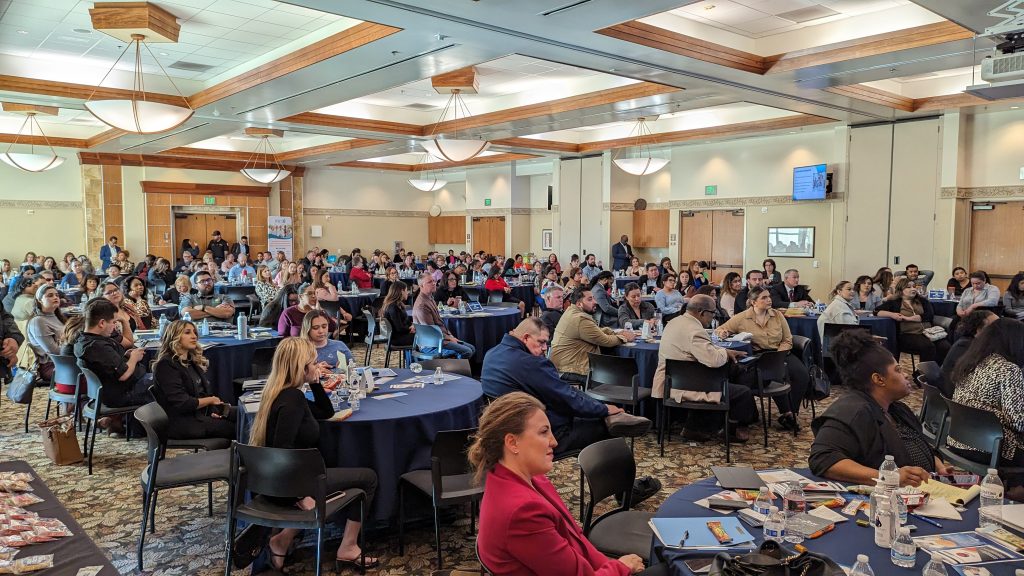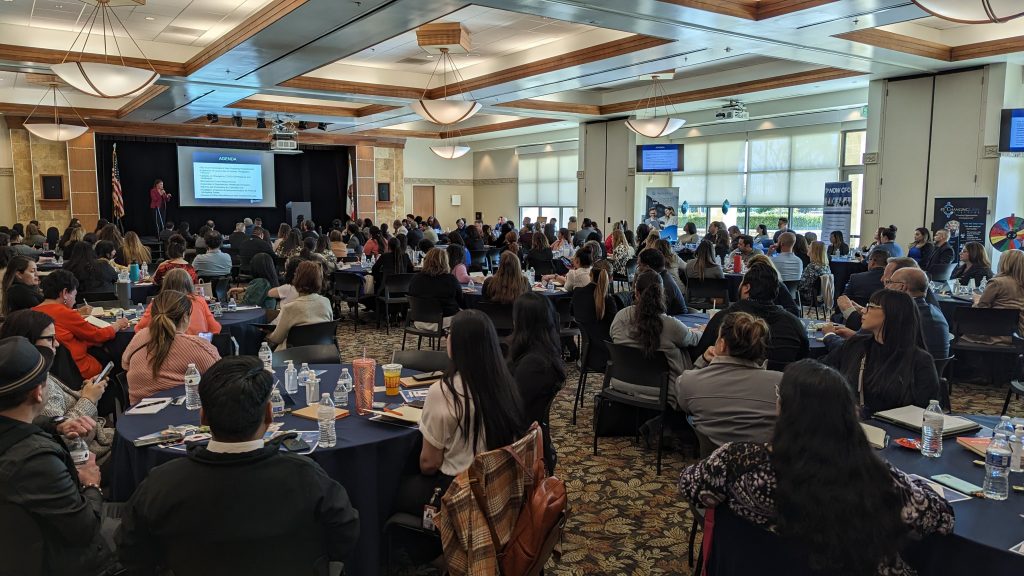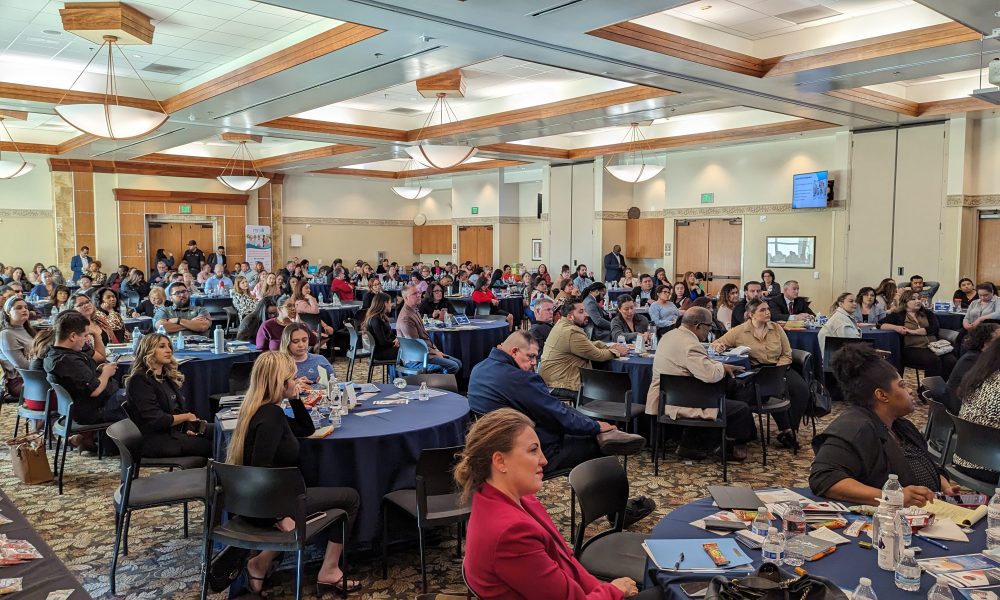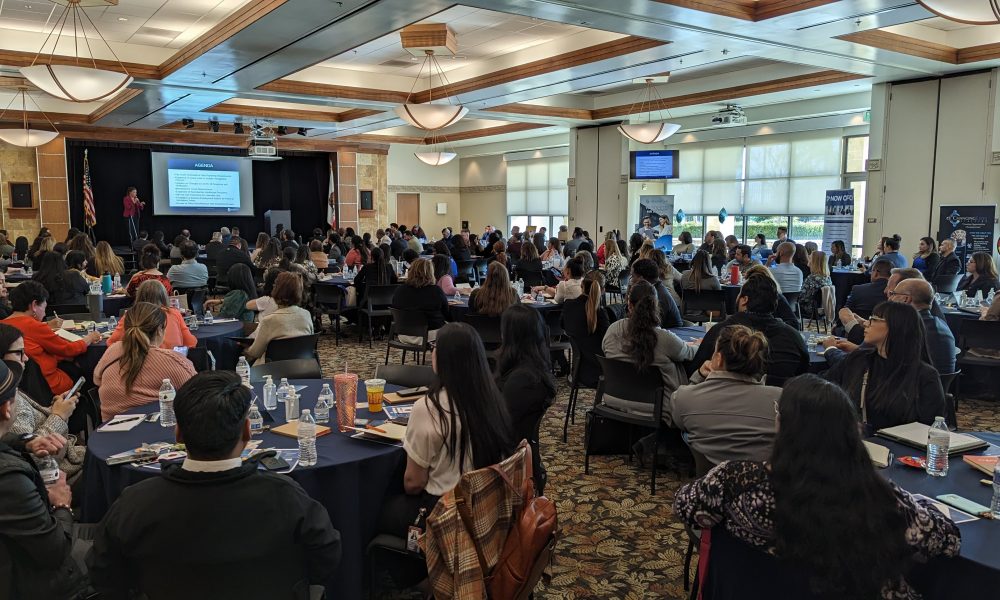Career & Workplace
270 Business Owners and Human Resource Experts Convene for Inaugural Inland Empire HR Summit

Human Resource Conference Prepares Employers for Future Pay Equity Audits
By Ken Alan, Freelance Writer for IEBJ
“Pay transparency will transform how companies manage their compensation program,” observed Juan P. Garcia, principal at Blue Whale Compensation, LLC. New pay scale disclosure and data reporting requirements were the main topics at the 2023 Inland Empire Human Resources Conference. On Tuesday, February 7th, Garcia and other presenters urged the sold-out crowd of over 250 HR professionals to ramp up for these new regulations well in advance of future state compliance audits.
As of January 1, 2023, employers with at least 15 workers must include pay ranges in job postings. While that would seem to let smaller employers off the hook, conference speakers felt they would be at a competitive disadvantage if they failed to disclose pay.
It’s been 65 years since the Automobile Information Disclosure Act, more commonly known as the Monroney window sticker, required car dealers to reveal equipment and pricing information on new automobiles. Over the years, similar disclosures and protections were put in place for home buyers. Still, it wasn’t until 2019 when Colorado became the first state to put wages in the spotlight — arguably our most significant personal finance decision. California now follows Colorado, New York City, and Washington State in mandating pay transparency disclosures.
The law requires companies to post “the salary or hourly wage range that the employer reasonably expects to pay for the position.” Still, recruiting experts SB Sheryl Moore, COO and Vilma Brager, senior partner at Insight HR Consulting LLC, cautioned employers against posting narrow ranges as a means to discourage candidates from asking for the top salary.
Garcia said, “Companies are basing compensation on market conditions rather than the ‘similar work rule,’ which makes them uncompetitive.”
Once a pay range has been published, employers will need a good reason to extend pay beyond those boundaries, according to Allyson K. Thompson, partner and attorney at Kaufman Dolowhich Voluck. Employers encountering these conundrums should consult with legal counsel.
Recruitment and retention challenges were also highlights of the presentations. Brager & Moore urged employers to think beyond the traditional job posting websites and to leverage strategies like employee referral bonuses. They advocated using behavioral interviewing and leadership assessment testing, such as the Myers-Briggs “personality inventory.”
The COVID-19 pandemic gave workers a chance to experience the benefits of remote work, and now getting them to return to the office remains a critical recruitment and retention challenges. “The workforce was able to work and get things accomplished in 2020 and now that employers are pulling them back into the (office,) they’re saying, ‘why do I need to do that?’ said Moore. “There’s so much stress in (commuting), and they’re saying, ‘I got so much more work done with a flexible schedule.’”
Moore confirmed that many employers make the mistake of posting a job as “remote,” when they really mean, “hybrid.” “When I see ‘remote,’ I think it means working from home 100 percent of the time,” she said.
Brager & Moore offered several ideas for employee retention, including onboarding with on-the-job training and a 30- and 60-day check-in with the manager. They suggested employers consider mid-year performance reviews rather than just annual reviews. Town Hall meetings with the CEO were also recommended to enhance employee engagement.
Respecting employee privacy was another recurring theme. Speakers broadly advocated keeping interviews focused on the skills and responsibilities required for the job while avoiding questions that intrude into off-work activities. New California labor laws protect reproductive health decisions and off-the-job use of cannabis. Employers cannot ask for specifics about personal health issues when employees ask to take sick leave, but they can ask for a doctor’s note. Expanded bereavement leave limits what personal information employers can request.
Conference attendees were particularly interested in the rapidly evolving changes in coronavirus-related labor laws. “Cal/OSHA, not the California Department of Health, is your reference point for health & safety data,” said Thompson, who offered a roadmap to COVID compliance information starting at www.dir.ca.gov/dosh/coronavirus. “From there, visit your city, county and state health department websites, then go to the CDC,” she said, adding that California supplemental paid leave concluded on December 31, 2022.
Copies of the PowerPoint slide decks are available to attendees by contacting the Inland Empire Regional Chamber of Commerce at info@iechamber.org. The 2023 Inland Empire Human Resources Conference was organized and produced by the Inland Empire Regional Chamber of Commerce and sponsored by San Bernardino County, Insight HR Consulting, Maniaci Insurance Services, Inc., Paycor, Vestwell, Now CFO, and Strategic Retirement Partners.
Career & Workplace
California Continues to Struggle with Labor Supply as Employment Expands Modestly

State’s Unemployment Rate Remains Highest In Nation
California’s labor market expanded modestly in April, with total nonfarm employment in the state growing by 5,200 positions over the month, according to an analysis released today by Beacon Economics. March’s gains were revised down to 18,200 in the latest numbers, a 10,100 decline from the preliminary estimate of 28,300.
As of April 2024, California has recovered all of the jobs that were lost in March and April 2020, and there are now 314,300 more people employed in the state compared to February 2020. Total nonfarm employment has grown 1.8% over this time compared to a 3.9% increase in the United States overall. California increased payrolls by 1.2% from April 2023 to April 2024, trailing the 1.8% increase nationally over the same period.
The state’s unemployment rate held steady at 5.3% in April 2024, unchanged from the previous month. California’s unemployment rate is the highest in the nation and remains elevated relative to the 3.9% rate in the United States as a whole. The state continues to struggle with its labor supply, which remained essentially unchanged in April (declining by a negligible 100). Since February 2020, California’s labor force has fallen by -246,200 workers, a -1.3% decline. In comparison, over the past twelve months the nation’s labor force has increased by 0.8%.
Industry Profile
- At the industry level, job gains were mixed in April. Health Care led the way with payrolls expanding by 10,100, an increase of 0.4% on a month-over-month basis. With these gains Health Care payrolls are now 13.6% above their pre-pandemic peak.
- Other sectors posting strong gains during the month were Transportation, Warehousing, and Utilities (3,700 or 0.4%), Leisure and Hospitality (3,100 or 0.2%), Government (2,600 or 0.1%), Education (1,800 or 0.4%), Retail Trade (1,000 or 0.1%), and Wholesale Trade (400 or 0.1%).
- Payrolls decreased a handful of sectors in April. Construction experienced the largest declines, with payrolls falling by -6,000, a contraction of -0.6% on a month-over-month basis. Note that this decline was largely due to late season storms affecting construction projects across the state.
- Other sectors posting significant declines during the month were Manufacturing (-5,300 or -0.4%), Professional, Scientific, and Technical Services (-3,600 or -0.3%), Real Estate (-700 or -0.2%), Finance and Insurance (-700 or -0.1%), Administrative Support (-600 or -0.1%), and Information (-600 or -0.1%).
Regional Profile
- Regionally, job gains were led by Southern California. Los Angeles (MD) saw the largest increase, where payrolls grew by 5,700 (0.2%) during the month. The Inland Empire (2,600 or 0.2%) and San Diego (1,200 or 0.1%) also saw their payrolls jump during the month. However, payrolls fell in Orange County (-2,700 or -0.2%), Ventura (-500 or -0.2%), and El Centro (-2,200 or -0.3%). Over the past year, El Centro (1.9%) has had the fastest job growth in the region, followed by the Inland Empire (1.5%), Ventura (1.4%), Orange County (1.1%), San Diego (0.8%), and Los Angeles (MD) (0.6%).
- In the Bay Area, the East Bay experienced the largest increase, with payrolls expanding by 2,600 (0.2%) positions in April. San Rafael (MD) (200 or 0.2%) and Napa (100 or 0.1%) also saw payrolls increase during the month. However, San Francisco (MD) (-1,700 or -0.1%), Santa Rosa (-600 or -0.3%), and Vallejo (-600 or -0.2%) experienced payroll declines during the month. Over the past 12 months, Vallejo (3.0%) enjoyed the fastest job growth in the region, followed by Santa Rosa (2.3%), Napa (2.2%), San Rafael (MD) (1.6%), the East Bay (0.9%), San Jose (0.2%), and San Francisco (MD) (-0.8%).
- In the Central Valley, Sacramento experienced the largest monthly increase as payrolls expanded by 900 (0.1%) positions in April. Payrolls in Yuba (400 or 0.8%), Bakersfield (300 or 0.1%), Fresno (300 or 0.1%), and Visalia (100 or 0.1%) increased as well. However, payrolls fell in Stockton (-500 or -0.2%), Modesto (-200 or -0.1%), Merced (-200 or -0.3%), Redding (-100 or -0.1%), and Hanford (-100 or -0.2%). Over the past year, Madera (5.7%) had the fastest growth, followed by Yuba (4.2%), Merced (3.7%), Modesto (3.6%), Sacramento (2.5%), Hanford (2.4%), Redding (2.3%), Fresno (2.2%), Visalia (2.1%), Stockton (2.0%), Chico (1.5%), and Bakersfield (1.1%).
- On California’s Central Coast, Salinas (200 or 0.1%) and Santa Cruz (200 or 0.2%) added the largest number of jobs during the month. Santa Barbara (-100 or -0.1%) saw payrolls decline. From April 2023 to April 2024, Salinas (1.9%) has added jobs at the fastest rate, followed by Santa Cruz (1.6%), Santa Barbara (0.8%), and San Luis Obispo (0.5%).
Career & Workplace
Inland Economic Growth & Opportunity (IEGO) Announces 2024 Priorities

Strategic Vision: Prioritizing Sustainable Growth and Enhanced Opportunities in the Inland Region
The Inland Economic Growth & Opportunity (IEGO), a collaborative organization dedicated to fostering economic growth, has announced its 2024 strategic priorities designed to create a vibrant, inclusive, and sustainable economy for Southern California’s Inland Empire. Among its immediate priorities include its role in Governor Newsom’s California Jobs First regional jobs strategy.
“As one of the California Jobs First statewide collaboratives, IEGO is committed to engaging a wide ranging and diverse group of stakeholders in our economic development focus so that we can improve the quality of life for all residents across the region,” said IEGO Executive Director Matthew Mena.
IEGO’s strategy is critical. While Inland Southern California remains one of California’s top job growth markets, it also ranks as having the lowest average weekly wages according to employment data for the nation’s 50 largest county job markets as reported by the US Bureau of Labor Statistics.
The IEGO 2024 priorities are designed to counter that trend and encourage greater business investment, including:
California Jobs First: IEGO will develop Inland Southern California’s regional jobs strategy to create quality jobs and a more accessible economy as part of Governor Newsom’s very intentional, inclusive approach to economic and workforce development to maximize state resources and investments by empowering communities to chart their own futures. Much of the funding will support career development projects from capacity building to industry-specific programs, and new job training.
Center of Excellence: As one of the state’s designated Center of Excellence, IEGO will support the region’s community colleges and their partners by providing research on the local labor market, including information on job growth, wages, demographics, top employers, education, and skill requirements, as well as education outcomes for industries and occupations critical to the Inland Empire’s economy. This data will help inform the development of new community college programs, curriculum, and partnerships that the colleges pursue in their efforts to prepare residents for high-paying, fast-growing jobs that Inland Empire businesses need today and in the future.
Regional Marketing: IEGO will work to ensure that the region is well positioned to benefit from public and private investment and is fully recognized for its economic strength and opportunity. In this way, IEGO can enhance the delivery of public and private resources to the two-county region.
“There’s real opportunity for the IEGO Center of Excellence to lead deeper economic and workforce research. One of the immediate areas is our Top 50 Jobs report. We want to better identify the best job opportunities and pathways for workers in struggling families to make ends meet and build wealth,” said Andy Hall, who is leading report development for the Center of Excellence.
Career & Workplace
The City of Rancho Cucamonga Recognized as U.S. Best-in-Class Employer by Gallagher

Gallagher’s Best-in-Class Benchmarking Analysis Identifies U.S. Organizations That Excel in Optimizing Employee and Organizational Wellbeing
The City of Rancho Cucamonga participated in Gallagher’s 2023 U.S. Benefits Strategy & Benchmarking Survey and was identified as an organization that excelled in implementing successful strategies for managing people and programs. The City of Rancho Cucamonga was recognized for its comprehensive framework for strategically investing in benefits, compensation and employee communication to support the health, financial security and career growth of its employees at a sustainable cost structure.
Designations like Gallagher’s Best-in-Class Employer help current and potential employees understand and appreciate an organization’s workplace culture and people strategy; important differentiators as employers compete for talent in today’s labor market.
“This award is a testament to the collective dedication and unwavering commitment of our team, reflecting the high standards we uphold in fostering a workplace that thrives on innovation, belonging, and employee well-being.” Robert Neiuber, Senior Human Resources Director, City of Rancho Cucamonga.
A U.S. Best-in-Class Employer, the City of Rancho Cucamonga was assigned points based on its relative performance in:
- Plan horizons for benefits and compensation strategies
- Extent of the wellbeing strategy
- Turnover rate for full-time equivalents (FTEs)
- Completion of a workforce engagement survey
- Use of an HR technology strategy and its level of sophistication
- Difference in healthcare costs over the prior year
- Use of a communication strategy
The City of Rancho Cucamonga understands that high employee expectations haven’t budged in the changing labor market and have regularly examined their formula to attract and retain talent,” said William F. Ziebell, CEO of Gallagher’s Benefits & HR Consulting Division. “In doing so, the City of Rancho Cucamonga utilizes data, workforce feedback tools and clearly defined policies to provide competitive benefits and experiences that their employees value.”
-

 Opinion1 month ago
Opinion1 month agoSurge in Unemployment Among California Youth Linked to Minimum Wage Hikes
-

 Commercial Real Estate Transactions3 weeks ago
Commercial Real Estate Transactions3 weeks agoSRS Real Estate Partners Announces Record-Breaking $6.15 Million Ground Lease Sale of a New Construction Chick-fil-A Property in Murrieta, California
-

 Health & Wellness3 weeks ago
Health & Wellness3 weeks agoBuddha Bars: A Mother’s Innovative Solution to Healthy Snacking
-
By Press Release1 week ago
California Employment Expansion Continues But Still Trails Nation






















